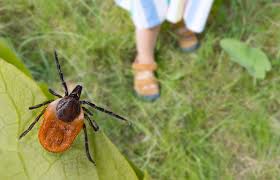Nature hosts a vast range of species, and among them, ticks are ones we generally try to steer clear of.
These small arachnids, relatives of spiders, mites, and scorpions, are parasites that feed on the blood of larger animals, including humans. Unfortunately, they are carriers of harmful bacteria and can transmit diseases to people. The incidence of tick-borne diseases is alarmingly high, with about 50,000 cases reported annually and many more likely unreported.

There are various tick species, and some of them can end up in human habitats. The most common types found in homes include the black-legged tick, the dog tick, and the brown dog tick.
- Black-legged Ticks, also known as deer ticks, have a brown or black color and an oval, flat body. They are often found in forests and are known carriers of Lyme disease.
- Dog Ticks are larger, with a brown to reddish-brown color and a sturdy, shield-like body. They are known for transmitting Rocky Mountain spotted fever.
- Brown Dog Ticks have a brown color and a slender body.
Tick activity peaks between March and October, but they can be a concern throughout the year. A tick bite can lead to symptoms months later. Although the bite itself may not be painful, it can cause swelling, itching, blistering, and bruising. Ticks are notorious for transmitting serious illnesses such as Lyme disease, Rocky Mountain spotted fever, ehrlichiosis, and babesiosis.

Lyme disease initially manifests as a circular red rash resembling a bull’s eye at the bite site. Not everyone develops this rash, so it’s important to be alert for flu-like symptoms, including fever, headache, fatigue, and body aches.
To prevent tick bites, it’s best to avoid areas with tall grasses and tick-infested environments like moorlands and forests, especially during warmer weather.
If you are bitten by a tick, prompt removal is crucial to prevent infection.
Here are some safe removal techniques:
- Utilize clean, fine-tipped tweezers to carefully grab the tick as close to the skin’s surface as possible.
- Gently pull the tick upward, avoiding twisting or jerking, as this can cause parts of the tick to break off and remain in the skin, potentially leading to disease transmission.
- After removal, clean the bite area with soap and water or an antiseptic. Watch for signs of infection or rash and seek medical advice if needed.

In case ticks enter your home, quick action is necessary to avert an infestation. Ticks often hitch a ride inside on clothing or pets.
- Restrict access to the affected area to prevent pets and children from encountering ticks.
- Wear protective clothing like gloves and long sleeves to avoid tick bites.
- Thoroughly clean the area where the tick was found, including washing any bedding. Check for additional ticks. Dispose of the tick by flushing it or sealing it in a container before discarding it in the trash.








